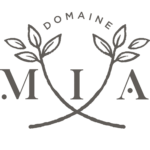Ageing in Burgundy cellars, in vats or oak barrels, helps to improve and age wines. This is an essential stage in making a good wine, starting after fermentation and lasting until bottling, i.e. between 12 and 24 months after the harvest for red wines and between 8 and 16 months for white wines.
Aging is a slow process and represents a crucial phase in the final quality of the wine, , as it is during these few months that it enriches its aromatic range and its structure becomes more complex.
The wine is usually kept in "pièces", the Burgundian term for the traditional 228-litre oak cask) or in vats sometimes in both, successively.
It is then the object of the winegrower's attentive care, as this is a period during which Burgundy wine receives special attention and the winegrower's expertise comes into its own.
The winegrower is involved in three types of operations:
- topping up: the natural evaporation of the wine creates a vacuum in the vat or cask that needs to be compensated for to avoid any oxidation harmful to the wine's aromas.
- racking: this involves separating the wine from the lees generated by fermentation. This oxygenates the wine and encourages the development of aromas.
- stirring: this is particularly important for white wines, which are often matured on their lees. This involves stirring the contents so that the lees are in contact with the wine as a whole, to give it complexity, roundness and fatness.
